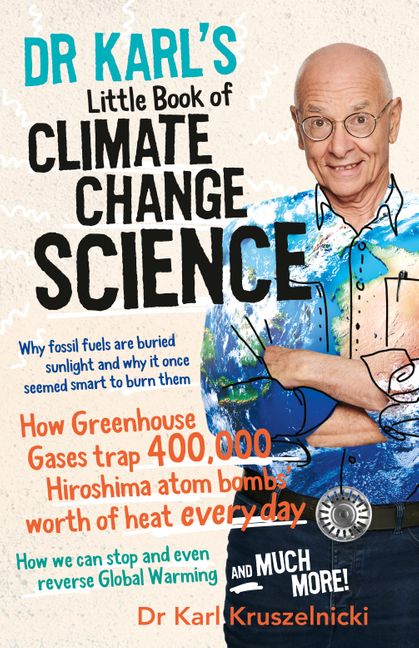Report on Climate Change within the Framework of Sustainable Development Goals
This report outlines the scientific basis of climate change, contextualized within the global commitment to the Sustainable Development Goals (SDGs). The periodic modification of Earth’s climate, driven by atmospheric changes and complex interactions within the Earth system, presents a direct challenge to global sustainability. Addressing this challenge is the core objective of SDG 13 (Climate Action), which necessitates a comprehensive understanding of the planet’s climatic processes.
The Integrated Earth System and Its Relevance to the SDGs
The Earth’s climate is not an isolated phenomenon but is part of an integrated system where various components interact. Understanding this system is fundamental to achieving several key SDGs.
Core Components of the Earth System
- The Atmosphere: A dynamic fluid whose motion and properties are central to climate.
- Oceans: A critical regulator of heat distribution, directly impacting SDG 14 (Life Below Water).
- Ice Masses: Glaciers and sea ice, which are sensitive indicators of climatic shifts.
- Land Surfaces: Topography and continental positions that influence atmospheric and oceanic circulation.
- Vegetation: Flora that influences climate by affecting energy reflection, water transfer, and air currents, linking climate directly to SDG 15 (Life on Land).
Interdisciplinary Understanding for Sustainable Action
The complex feedback loops between these components require an interdisciplinary approach known as Earth system science. This collaborative field, which integrates climatology, geology, ecology, and oceanography, embodies the spirit of SDG 17 (Partnerships for the Goals). By studying Earth system history, scientists can analyze past climatic experiments to better forecast future changes and inform strategies for building resilient infrastructure and communities, a key target of SDG 11 (Sustainable Cities and Communities).
Principal Drivers of Climatic Variation
Climate varies across all timescales, from diurnal cycles to geologic eras. This variation is driven by a number of influencing factors that operate on different schedules.
Key Influencing Factors
- Solar Radiation: The primary energy source for the climate system.
- Continental Position: The geographic layout of landmasses, which changes over millions of years.
- Ocean Currents: The circulation of ocean water that distributes heat around the globe.
- Mountain Ranges: The location and orientation of which can alter atmospheric flow.
- Atmospheric Chemistry: The composition of the atmosphere, which can change on very short timescales due to natural and anthropogenic activities.
- Surface Vegetation: The extent and type of plant cover, which impacts local and global climate.
Historical and Scientific Evidence for Climate Change
The scientific understanding of climate change has evolved significantly, built upon geological evidence and advanced analytical techniques. This historical context validates the urgency of current climate action.
Geological and Paleontological Findings
Nineteenth-century scientists began to recognize that Earth’s past climates were radically different from the present. Evidence included:
- Fossil records of tropical plants and corals in present-day high-latitude regions of Europe and North America.
- Geological indicators of arid conditions, such as red beds, in regions that are now humid.
These findings confirm that the Earth system is capable of dramatic shifts, highlighting the potential magnitude of changes that could undermine progress on the SDGs.
Orbital Variations (Milankovitch Cycles)
It is now understood that long-term climate cycles, such as glacial and interglacial periods, are driven by recurring variations in Earth’s orbit. These cycles, proposed by Milutin Milankovitch, are caused by changes in:
- Eccentricity: The shape of Earth’s orbit around the sun.
- Precession: The wobble of Earth’s axis of rotation.
- Axial Tilt: The change in the inclination of Earth’s axis.
Understanding these natural drivers provides a crucial baseline for identifying and measuring the impact of human activities on the climate, which is the central focus of SDG 13.
Analysis of Sustainable Development Goals in the Article
1. Which SDGs are addressed or connected to the issues highlighted in the article?
- SDG 13: Climate Action: The entire article is dedicated to defining and explaining “climate change,” its mechanisms, and the scientific history of its study. This directly aligns with the goal of taking urgent action to combat climate change and its impacts.
- SDG 15: Life on Land: The text explicitly describes the interaction between climate and terrestrial ecosystems. It states, “climate influences the distribution of vegetation on Earth’s surface (e.g., deserts exist in arid regions, forests in humid regions).” It also discusses “glaciers,” “land surfaces,” and the science of “ecology,” all of which are central to SDG 15.
- SDG 14: Life Below Water: The article identifies “oceans,” “ocean currents,” and “sea ice” as critical components of the Earth system that are intrinsically linked to climate. The study of “oceanography” and “paleoceanography” is mentioned, highlighting the importance of understanding marine environments in the context of climate change.
- SDG 6: Clean Water and Sanitation: The text refers to “droughts” and “floods” as examples of historical “climatic events.” These events directly relate to water scarcity and water-related disasters, which are key concerns of SDG 6.
- SDG 17: Partnerships for the Goals: The article emphasizes the need for an interdisciplinary approach to understand climate change. It describes “Earth system science” as a field composed of “climatology, geology, ecology, oceanography, glaciology, and even the social sciences.” This highlights the collaborative effort required to address a complex global issue, which is the essence of SDG 17.
2. What specific targets under those SDGs can be identified based on the article’s content?
-
Under SDG 13 (Climate Action):
- Target 13.1: Strengthen resilience and adaptive capacity to climate-related hazards and natural disasters. The article’s mention of “droughts, floods, periods of severe cold, and other climatic events” points to the types of hazards for which resilience is needed.
- Target 13.3: Improve education, awareness-raising and human and institutional capacity on climate change. The article itself serves as an educational resource, explaining the complex science of climate change, its history, and the “integrated Earth system,” thereby contributing to awareness and capacity building.
-
Under SDG 15 (Life on Land):
- Target 15.1: Ensure the conservation, restoration and sustainable use of terrestrial and inland freshwater ecosystems. The article’s discussion of how climate affects “forests,” “deserts,” and the overall “distribution of vegetation” underscores the importance of this target.
- Target 15.3: Combat desertification, restore degraded land and soil. The mention of “red beds indicated aridity in regions that are now humid” and the existence of deserts in arid regions relates directly to the processes of desertification driven by climate.
-
Under SDG 14 (Life Below Water):
- Target 14.2: Sustainably manage and protect marine and coastal ecosystems. The article’s focus on the role of “oceans,” “ocean currents,” and “sea ice” in the climate system implies that their protection is essential for climate stability. The mention of “fossils of… reef corals” in high latitudes indicates the vulnerability of these ecosystems to climate shifts.
-
Under SDG 6 (Clean Water and Sanitation):
- Target 6.5: Implement integrated water resources management at all levels. The article’s core concept of an “integrated Earth system” where atmosphere, oceans, and land interact supports the need for integrated management of resources like water, which are affected by climate events like “droughts” and “floods.”
-
Under SDG 17 (Partnerships for the Goals):
- Target 17.14: Enhance policy coherence for sustainable development. The description of “Earth system science” as a necessary interdisciplinary field demonstrates that understanding climate change requires a coherent, integrated scientific approach, which is a precursor to coherent policy.
3. Are there any indicators mentioned or implied in the article that can be used to measure progress towards the identified targets?
- The article defines climate by a set of measurable features, which can serve as direct indicators. These include changes in “temperature, precipitation, humidity, and windiness.”
- The frequency and severity of extreme weather events, such as the “droughts” and “floods” mentioned in the text, are key indicators for measuring climate impacts and resilience (Target 13.1).
- Physical changes in the Earth system are mentioned as indicators of climate change. These include the extent of “glaciers and sea ice,” shifts in “ocean currents,” and changes in the “distribution of vegetation on Earth’s surface.” The photo description of the shrinking Grinnell Glacier provides a visual example of such an indicator.
- The article mentions “atmospheric chemistry” as a factor influencing climate. The video caption’s reference to “carbon dioxide” implies that its concentration is a key indicator for tracking the human impact on the climate system.
- The development and integration of scientific disciplines into fields like “Earth system science” and “Earth system history” can be seen as an indicator of progress in building the scientific partnerships (SDG 17) needed to understand and address climate change.
4. Summary of SDGs, Targets, and Indicators
| SDGs | Targets | Indicators Identified in the Article |
|---|---|---|
| SDG 13: Climate Action | 13.1: Strengthen resilience to climate-related hazards. 13.3: Improve education and awareness on climate change. |
– Occurrence of droughts, floods, and periods of severe cold. – Changes in atmospheric chemistry (e.g., carbon dioxide). – Variations in temperature, precipitation, humidity, and windiness. |
| SDG 15: Life on Land | 15.1: Conserve and restore terrestrial ecosystems. 15.3: Combat desertification. |
– Changes in the distribution of vegetation (e.g., forests, deserts). – Changes in land aridity (e.g., “red beds”). – Changes in the extent of continental glaciers. |
| SDG 14: Life Below Water | 14.2: Manage and protect marine ecosystems. | – Changes in ocean currents. – Changes in the extent of sea ice. – Historical changes in the location of coral reefs (identified via fossils). |
| SDG 6: Clean Water and Sanitation | 6.5: Implement integrated water resources management. | – Frequency and severity of droughts and floods. |
| SDG 17: Partnerships for the Goals | 17.14: Enhance policy coherence for sustainable development. | – Development of interdisciplinary sciences like “Earth system science” involving climatology, geology, ecology, oceanography, etc. |
Source: britannica.com






